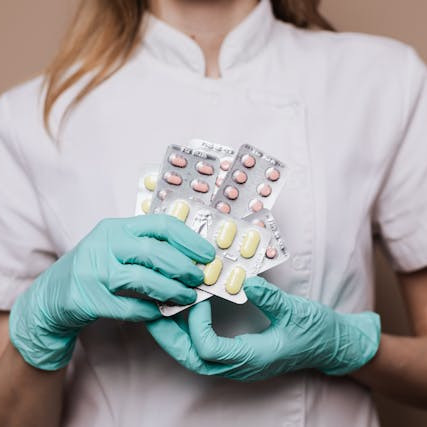
04 Feb What Is The Difference Between Adderall And Ritalin?
Adderall and Ritalin are FDA-approved stimulants for treating ADHD and narcolepsy, with Ritalin commonly prescribed for children and Adderall more effective in adults. Both increase dopamine and norepinephrine in the brain, improving attention and impulse control. They differ in active ingredients, side effects, and potential for misuse, with Adderall posing a higher risk. Immediate and extended-release forms are available, with varying dosages based on age and condition. The choice between them depends on individual needs, insurance coverage, and cost, with generic options offering affordability.
Table of Contents:
What are Adderall and Ritalin?
Adderall and Ritalin are two commonly prescribed medications used to help manage attention-deficit/hyperactivity disorder (ADHD). Both belong to a group of drugs called stimulants, which means they work to increase certain brain chemicals that improve focus, control impulsivity, and help with hyperactivity.
While Ritalin and Adderall share similarities, they are not the same. Each has a different chemical makeup and works slightly differently in the brain. Adderall contains a combination of amphetamine salts, while Ritalin is made from a substance called methylphenidate. These differences can influence how quickly the medication starts working and how long its effects last.
Choosing between Ritalin and Adderall often depends on your unique needs and how your body responds to treatment.

For some, Ritalin might work better because it acts quickly but does not last as long, while others might prefer Adderall for its longer-lasting effects.
It is important to know that both medications require a doctor’s prescription, and finding the right fit often involves some trial and adjustment under medical supervision. If you or a loved one are looking into ADHD treatment, talking with a healthcare provider about these medications can help determine which option might suit you best.
Adderall Detox
Regain control of your life and safeguard your health, career, finances, and relationships with in-home stimulant detox . Elite Home Detox offers treatment plans that are customized to address your unique needs and goals. We bring appointments to you, making it simple to get the care you need to make a full and lasting recovery.
Book NowHow Do They Work?
Adderall and Ritalin both help improve focus and reduce impulsive behaviors by targeting certain chemicals in the brain, specifically dopamine and norepinephrine. These chemicals play a big role in how we pay attention, stay organized, and manage our emotions.
Adderall increases the levels of these chemicals by stimulating their release, which helps people with ADHD feel more in control and less distracted. Ritalin works a little differently by blocking the reabsorption of dopamine and norepinephrine, keeping them active longer in the brain.
Adderall vs. Ritalin
When comparing Adderall and Ritalin, one key difference is how they affect brain chemistry and how quickly they work. Adderall tends to last longer in the body, making it a good choice for people who need consistent focus throughout the day. However, Adderall side effects like trouble sleeping or appetite changes can sometimes be an issue.
Ritalin, on the other hand, starts working more quickly but does not last as long, which may require multiple doses during the day. This might suit someone who only needs help focusing for shorter periods. Some common Ritalin side effects include headaches or stomach upset, though these often improve over time.
| Characteristic | Adderall | Ritalin |
|---|---|---|
| Effect on Brain Chemistry | Increases dopamine and norepinephrine levels | Blocks reabsorption of dopamine and norepinephrine |
| Onset of Action | Takes longer to start working | Starts working more quickly |
| Duration of Effect | Lasts longer in the body | Does not last as long |
| Dosage Frequency | May require less frequent dosing | May require multiple doses throughout the day |
What is Adderall?
Adderall is a prescription medication most commonly used to treat attention-deficit/hyperactivity disorder (ADHD). It is designed to help improve focus, reduce impulsivity, and manage hyperactive behaviors. While Adderall is most often prescribed for children and adults with ADHD, it is sometimes used to treat narcolepsy, a sleep disorder that causes excessive daytime sleepiness (1).
How It Works
Adderall is made from amphetamine salts, which stimulate the release of dopamine and norepinephrine in the brain (2). These chemicals help improve attention and reduce hyperactivity by enhancing communication between brain cells.
By increasing the levels of these neurotransmitters, Adderall helps people with ADHD manage their behaviors better and stay focused on tasks. While it works well for many people, it does carry some risks of dependency, making proper medical supervision important. For those struggling with misuse, resources are available to help detox Adderall safely under a doctor’s care.
Available Forms: Immediate-Release (IR) vs. Extended-Release (XR)
Adderall comes in two forms: immediate-release (IR) and extended-release (XR). The IR form works quickly, making it useful for those who need short-term symptom control, often taken 2-3 times daily.
The XR form, on the other hand, is designed to release the medication gradually over several hours. This provides consistent symptom management throughout the day, often requiring only one dose in the morning. Doctors may recommend XR for people who need longer-lasting effects, like students or professionals.
Typical Dosage Schedules and Medical Uses
The dosage of Adderall depends on factors like age, weight, and the severity of ADHD symptoms. For children, treatment often starts with a low dose that can be gradually adjusted. Adults may begin with a higher dose, based on their needs.
Adderall is usually taken once in the morning for the XR version or several times a day for the IR version. It is important to follow your doctor’s guidance closely, because taking too much can lead to serious risks, including Adderall addiction. When used correctly, it can greatly improve your focus and organization.
Forms, Strengths, and Recommended Dosages of Adderall
- Immediate-release Adderall tablets come in the following strengths:
- 5 mg
- 7.5 mg
- 10 mg
- 12.5 mg
- 15 mg
- 20 mg
- 30 mg
- Extended-release Adderall XR capsules come in the following strengths:
- 5 mg
- 10 mg
- 15 mg
- 20 mg
- 25 mg
- 30 mg
Using immediate-release Adderall to treat ADHD:
- Children 6 to 17 and adults 18 and older typically start with 5 mg once or twice a day and may increase it by 5 mg each week until it reaches the desired effect.
- Children 3 to 5 typically start with 2.5 mg once or twice a day and may increase it by 2.5 mg each week until it reaches the desired effect.
Using extended-release Adderall XR to treat ADHD:
- Adults 18 and older typically start with 20 mg once a day and may increase or decrease weekly until it reaches the desired effect.
- Children 13 to 17 typically start with 10 mg once a day and may increase to 20 mg once a day after the first week if necessary.
- Children 6 to 12 typically start with 5 or 10 mg once a day and may increase by 5 or 10 mg each week until the desired effect is reached.
Using immediate-release Adderall to treat narcolepsy:
- Children 12 to 17 and adults 18 and older typically start with 10 mg once a day and may increase by 10 mg each week until the desired effect is reached.
- Children 6 to 11 typically start with 5 mg once a day and may increase by 5 mg each week until the desired effect is reached.
- Anyone taking Adderall or Adderall XR for ADHD or narcolepsy should take the first dose when they wake up and wait four to six hours between any additional doses throughout the day.
FDA Approval and Off-Label Uses
The FDA has approved Adderall for treating ADHD and narcolepsy. These are its primary uses, but doctors may also prescribe it “off-label” for other conditions, such as treatment-resistant depression or severe fatigue caused by medical conditions.
However, off-label use should always be carefully managed by a doctor in order to prevent any complications, including dependency or misuse. For anyone concerned about their use of the medication, getting help to detox Adderall can be a safe way to regain control.
What Is Ritalin?
Ritalin is a prescription medication that is commonly used to treat attention-deficit/hyperactivity disorder (ADHD). It helps people manage symptoms like difficulty focusing, being overly active, or acting without thinking. By improving attention and self-control, Ritalin can make daily tasks and responsibilities a lot easier to handle for both children and adults.
Doctors prescribe Ritalin for ADHD after carefully looking into a person’s symptoms, age, and overall health. The medication is also sometimes used to treat narcolepsy.
How It Works
Ritalin contains a chemical called methylphenidate, which changes how the brain uses certain neurotransmitters, particularly dopamine and norepinephrine. These brain chemicals play a big role in attention and behavior.
By preventing the quick breakdown of these neurotransmitters, Ritalin allows them to stay active longer, which helps improve focus and reduce impulsivity. This makes it a go-to option for managing Ritalin ADHD symptoms.
Available Forms: Immediate-Release (IR), Sustained-Release (SR), and Long-Acting (LA)
Ritalin is available in several forms to suit different needs. Immediate-release (IR) tablets act quickly and are often taken 2-3 times a day for short-term symptom control.
Sustained-release (SR) versions are designed to release the medication more gradually, providing symptom relief for longer periods, often requiring fewer doses. Long-acting (LA) forms, like Ritalin LA, offer all-day coverage with just a single dose in the morning, making them convenient for people who need lasting symptom management.
Typical Dosage Schedules and Medical Uses
The dosage for Ritalin depends on the patient’s age, symptoms, and how they respond to the medication. For children, treatment usually starts with a low dose that is gradually increased if needed. Adults may begin with a slightly higher dose, depending on their specific needs.
Most people take Ritalin one to three times daily, depending on whether they are using the IR, SR, or LA form. This flexibility makes it easier to customize the treatment to your daily routines. The most common use is for managing Ritalin ADHD symptoms, but it can also be prescribed for narcolepsy or other conditions as advised by a doctor.
Forms, strengths, and recommended dosages of Ritalin and Ritalin LA.
- Immediate-release Ritalin comes with the following strengths:
- 5 mg
- 10 mg
- 20 mg
- Extended-release Ritalin LA comes in the following forms:
- 10 mg
- 20 mg
- 30 mg
- 40 mg
Adults who take Ritalin or Ritalin LA for ADHD or narcolepsy typically start with 20-30 mg a day.
Children 6 to 17 who take Ritalin for ADHD or narcolepsy typically start with 5 mg twice a day (the first dose before breakfast and the second dose before lunch) and may increase it by 5-10 mg each week if necessary.
Children 6 to 12 who take Ritalin LA for ADHD typically start with 20 mg once a day and may increase by 10 mg each week if necessary.
Regardless of age or diagnosis, no one should take more than 60 mg a day of Ritalin or Ritalin LA.
FDA Approval and Off-Label Uses
The FDA has approved Ritalin for ADHD and narcolepsy, making it a widely trusted option for these conditions. These are its primary uses, but doctors sometimes prescribe it “off-label” for other issues, such as severe fatigue or certain mood disorders, when other treatments haven’t worked.
Off-label use of Ritalin should always be supervised by a doctor to ensure it’s safe and appropriate. Having a Ritalin prescription means you’ll have regular check-ins with your healthcare provider to adjust the dosage or address any concerns that you may have.
Cost, Availability, and Insurance
When comparing Adderall and Ritalin, cost and accessibility can play a big role in choosing the right medication. Both drugs are available in brand-name and generic forms, with generics often being more affordable.
For Ritalin, generic methylphenidate is widely available and usually less expensive than the brand-name version. However, the Ritalin price without insurance can still vary depending on the dosage and form, such as immediate-release or long-acting. On average, generic Ritalin tends to be more budget-friendly, especially for anyone who is paying out-of-pocket.
Adderall, which also has a generic option, can be slightly more expensive than Ritalin, depending on the pharmacy and whether insurance is used. For individuals without insurance, prices for Adderall can quickly add up, especially for extended-release versions.
Insurance often covers both medications, but the amount you will pay out-of-pocket depends on your specific plan. Always check with your provider to understand coverage and co-pays.
It is important to avoid buying Ritalin online without a valid prescription, because this can be unsafe and is often illegal. Working with a doctor and using a licensed pharmacy will help ensure that you’re getting safe and legitimate medication at the best price possible.
Side Effects
Both Adderall and Ritalin are widely used to treat ADHD, but they can cause side effects. While many side effects are mild and improve with time, others can be more serious, which is why medical supervision is so important.
Adderall Side Effects
Common Adderall side effects include difficulty sleeping (insomnia), loss of appetite, and an increased heart rate. These effects are usually mild and may lessen as your body adjusts to the medication.
Common Adderall Side Effects
Common Adderall side effects include difficulty sleeping (insomnia), loss of appetite, and an increased heart rate. These effects are usually mild and may lessen as your body adjusts to the medication.
- Anxiety
- Constipation
- Dizziness
- Dry mouth
- Headache
- Lack of appetite
- Nausea
- Stomach pain
- Trouble sleeping
- Weight loss
Severe Adderall Side Effects
In rare cases, Adderall can cause mood swings, significant changes in behavior, or cardiovascular issues, such as high blood pressure or irregular heart rhythms. If you experience any of these symptoms, it is important to talk to your doctor right away.
- Agitated or aggressive behavior
- Blurred vision
- Depression
- Hallucinations
- Heart problems like heart attack, high blood pressure, rapid heartbeat, and stroke
- Impaired or delusional thinking
- Irritability
- Rhabdomyolysis (muscle breakdown)
- Severe allergic reaction
Ritalin Side Effects
Common Ritalin Side Effects
Some of the mild side effects that Ritalin can cause include:
- Agitation
- Anxiety
- Difficulty sleeping
- Energized feeling
- Headache
- Moodiness
- Nausea
- Reduced appetite
- Worsening cardiac problems, seizures, and anxiety in people with a history of these conditions
Severe Ritalin Side Effects
Some of the severe side effects of Ritalin that require immediate medical attention include:
- Cardiovascular reactions like heart attack, stroke, and sudden death
- Development of new psychotic or manic symptoms
- Increased blood pressure
- Increased heart rate (tachycardia)
- Long-term suppression of growth and weight loss in children
- Poor circulation, including Raynaud’s phenomenon, and symptoms of poor circulation, such as numbness in your fingers or toes
- Potential for abuse and dependence
- Psychiatric adverse reactions such as worsening of a pre-existing psychiatric condition
- Sustained and sometimes painful erections in males
Rarely, more serious Ritalin side effects long-term can occur, such as growth suppression in children or, in some cases, psychosis. Parents should keep an eye out for unusual behaviors and consult their doctor about any concerns.
Drug Interactions
When taking medications like Adderall or Ritalin, it is crucial to let your doctor know about all the medicines, supplements, or even herbal products you are using. Stimulants can interact with other drugs in ways that might increase the risk of side effects or reduce how well the medications work. Proper communication with your healthcare provider helps avoid serious issues like worsened symptoms or potential dependency, such as Adderall addiction ADHD concerns.
Adderall Drug Interactions
Adderall can interact with antidepressants, especially those that increase serotonin, which may lead to a condition called serotonin syndrome. Blood pressure medications can also be affected, as Adderall might raise the blood pressure or heart rate, counteracting their effects.
Ritalin Drug Interactions
Ritalin may interact with alcohol, increasing its sedative effects and the potential for misuse, which can contribute to Ritalin addiction risks. Blood thinners, like warfarin, may also be impacted, as Ritalin can change how your body processes these drugs, increasing bleeding risks.
Adderall drug interactions can include:
- Acid-reducing drugs
- Antacids for indigestion (upset stomach) and heartburn
- Antidepressants
- Caffeine
- Vitamin C
- Certain migraine drugs, such as eletriptan (Relpax) and sumatriptan (Imitrex)
- Certain opioid pain relievers, such as fentanyl and tramadol
- L-tryptophan
- MAOIs
- Quinidine
- Ritonavir (Norvir)
- St. John’s wort
- Lithium
Drug interactions with Ritalin include:
- Acid reflux drugs
- Antihypertensive drugs
- Antipsychotics
- Blood pressure drugs
- Caffeine
- Certain anesthetics
- Cold or allergy medicines
- Monoamine oxidase inhibitors (MAOIs)
- Seizure medications
- Warfarin
Who Needs Adderall or Ritalin?
Both Ritalin and Adderall are prescribed to manage ADHD, but treatment can vary depending on whether the patient is a child, teenager, or adult. For children, Ritalin in youth is often considered because it has been studied for decades and tends to work quickly, which can help manage school-related challenges.
Adults may require a medication like Adderall for its longer-lasting effects, especially if they need focus throughout the workday. The choice between these drugs depends on factors like the severity of symptoms, lifestyle needs, and how the body reacts to each drug.
Can You Overdose on Adderall or Ritalin?
Yes, it is possible to overdose on both Adderall and Ritalin, and the risks are serious (3). Signs of an overdose can include a racing heart, extreme anxiety, confusion, or seizures. In severe cases, it can lead to heart problems, stroke, or even death.
Long-term misuse can also lead to Adderall addiction or Ritalin addiction, where the body starts relying on the medication to function (4). If you or someone you know is struggling, programs to detox Adderall safely under medical supervision can help. Always use these medications exactly as prescribed and talk to your doctor about any concerns.

Can People Use Them Together?
Combining Ritalin and Adderall is generally not recommended because both are stimulants and can significantly increase the risk of serious side effects like high blood pressure, anxiety, or heart issues. The combined side effects of Adderall and Ritalin can be very dangerous.
If one medication doesn’t seem to work, a healthcare provider may adjust the dosage or explore other options instead of prescribing both. Misusing these medications together can increase the risk of Adderall addiction and other health complications.
Which is Stronger, Adderall or Ritalin?
The strength and effectiveness of Adderall and Ritalin depend on how each individual responds to the medication. Adderall is generally considered more potent because it stays active in the body longer, making it a good choice for those who need long-lasting symptom control throughout the day.
Ritalin, often used for ADHD treatment, works faster but does not last as long. This makes it a reliable option for shorter periods of focus, such as during school hours. The choice between Adderall and Ritalin depends on personal needs, lifestyle, and how the body reacts to each medication.
Dangers of Stimulants
Both Adderall and Ritalin can lead to addiction if misused. Adderall addiction may occur if it is taken without a prescription or in higher doses than recommended. Similarly, Ritalin addiction can result from long-term misuse.
These medications are controlled substances with strict legal restrictions, so they should only be used under medical supervision. For those facing dependency, programs to detox Adderall or similar services can help address addiction safely.
People who have a history of abusing or being dependent on alcohol or drugs are more likely to abuse or become dependent on these medications.
Suddenly stopping Ritalin or Adderall after taking high doses or being dependent on them can cause withdrawal symptoms such as depression, fatigue, and tiredness. If you want to stop taking Ritalin or Adderall, you should work with your doctor to slowly reduce your doses over time to avoid withdrawal symptoms.
Alternatives to Adderall and Ritalin
If stimulants aren’t the right fit, alternatives like non-stimulant medications can help manage ADHD. Options such as atomoxetine or guanfacine can work without the same risks of misuse or dependency seen in Adderall addiction ADHD cases.
Behavioral therapy and lifestyle changes, such as improved sleep, exercise, and diet, can also make a difference. Parents concerned about the side effects of Ritalin in kids or those looking into a Ritalin prescription for the first time should discuss these alternatives with their doctor to find a balanced approach to ADHD management.
Conclusion
Choosing between Adderall and Ritalin depends on several factors, including how long you need symptom control, your tolerance for side effects, and your overall health. Ritalin works quickly and is often chosen for shorter periods of focus, while Adderall lasts longer, making it better for all-day relief.
Both Ritalin and Adderall are both effective medications for managing ADHD, but they differ in how they work, how long their effects last, and the potential side effects. Deciding between the two depends on your individual needs, lifestyle, and medical history. It’s also important to consider factors like long-term safety, costs, and how your body responds to treatment.
Choosing the right medication can feel overwhelming, but you don’t have to do it alone. A healthcare provider can help guide you through the process, monitor your progress, and help tackle any concerns along the way. Remember, taking the time to find the right solution is an important step toward better focus and balance in your daily life.
Adderall Detox Program
Although Adderall is an invaluable part of ADHD treatment for many people, it is possible to become addicted to this prescription drug. Elite Home Detox can help you recover from stimulant addiction with our personalized treatment programs and discreet in-home appointments .
We work with you every step of the way to overcome addiction and develop healthy coping mechanisms to help you stay sober for good.
Make an appointment today by giving us a call or clicking the button below.
Book NowReferences:
- Turner M. The Treatment of Narcolepsy With Amphetamine-Based Stimulant Medications: A Call for Better Understanding. J Clin Sleep Med. 2019;15(5):803-805. Published 2019 May 15. doi:10.5664/jcsm.7788.
- Joyce BM, Glaser PE, Gerhardt GA. Adderall produces increased striatal dopamine release and a prolonged time course compared to amphetamine isomers. Psychopharmacology (Berl). 2007;191(3):669-677. doi:10.1007/s00213-006-0550-9.
- Weyandt LL, Oster DR, Marraccini ME, et al. Prescription stimulant medication misuse: Where are we and where do we go from here?. Exp Clin Psychopharmacol. 2016;24(5):400-414. doi:10.1037/pha0000093.
- Morton WA, Stockton GG. Methylphenidate Abuse and Psychiatric Side Effects. Prim Care Companion J Clin Psychiatry. 2000;2(5):159-164. doi:10.4088/pcc.v02n0502.


